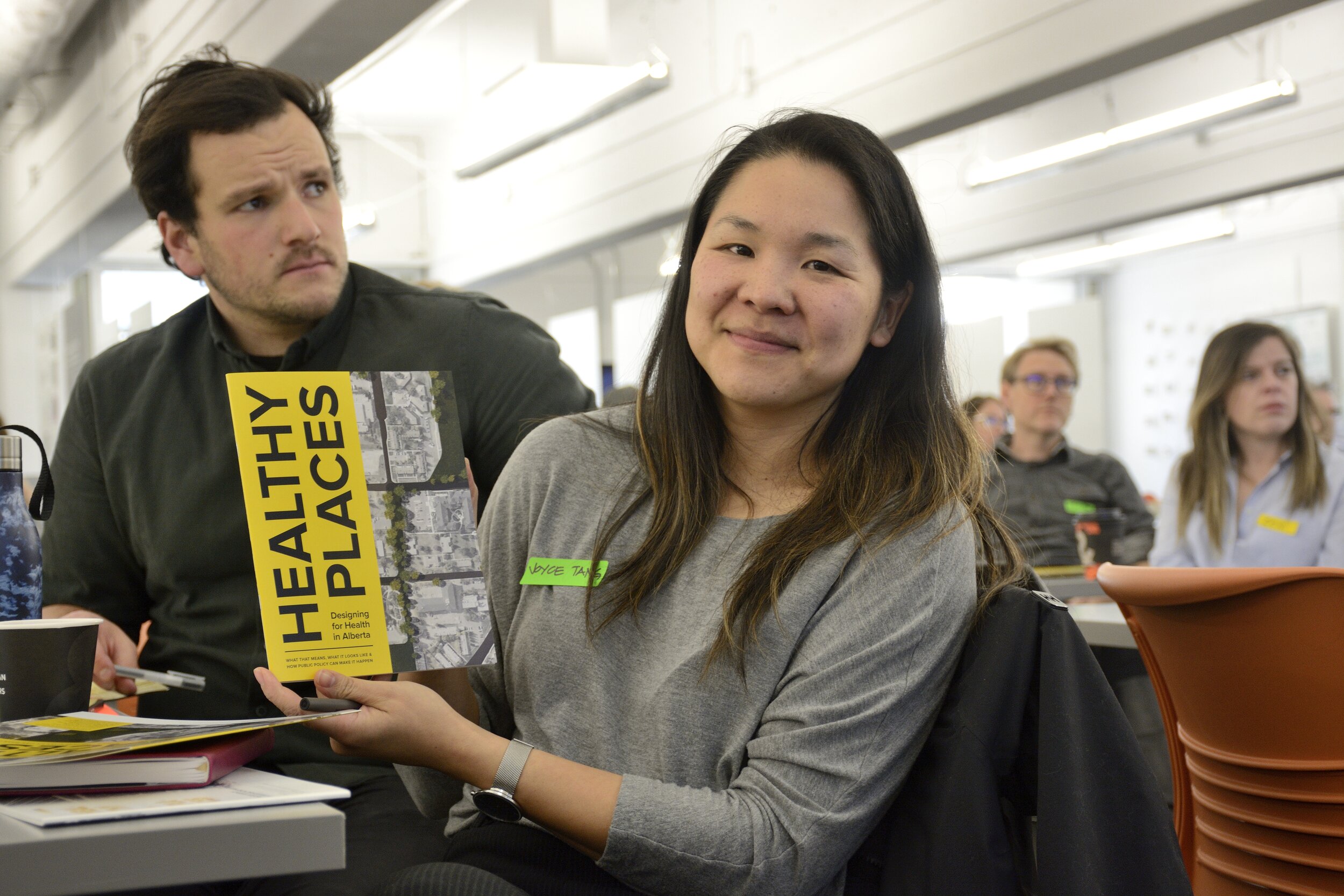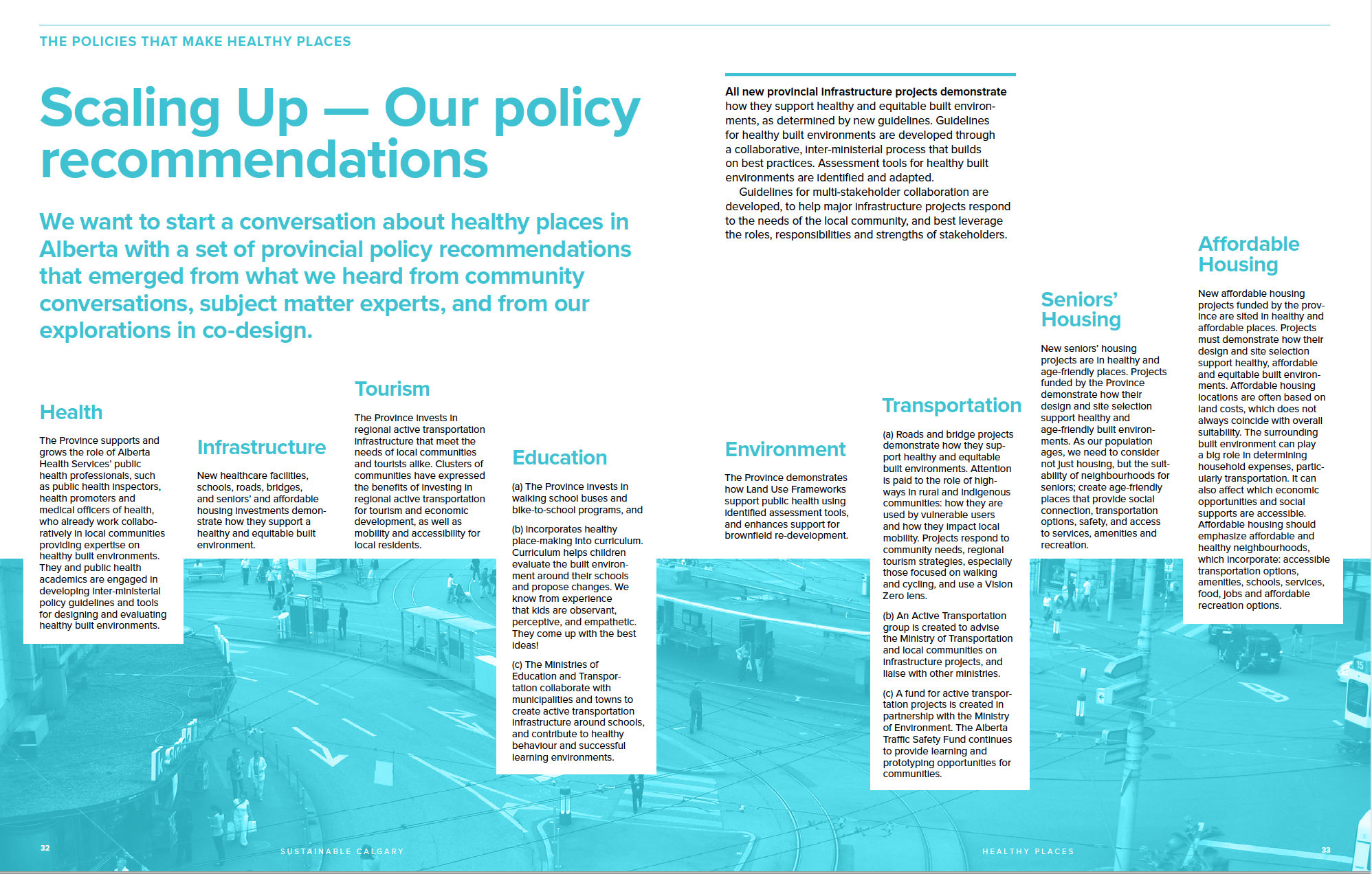Can the Province target chronic disease via infrastructure?
Transportation? Education? Affordable Housing? Environment?
Can they do so cost-effectively? Absolutely.
In November, we hosted the 2019 Healthy Places event to dive into these questions with experts, following up on our Healthy Places publication. We wanted to know if we were on the right track with proposed policy directions, and develop action items together.
A huge thank you to all of those who donated their time!
In March 2019, we described how different ministries could work towards built environments that promote public health and health equity - places that help Albertans move. Cool finding - the Ministry of Tourism seemed to be the biggest proponent of healthy built environments.
What actions could get the ball rolling? Here’s a sample of what we heard:
Integrating health expertise across ministries. Achieved by integrating a “Healthy Communities” policy across ministries (AKA health in all policies or HiAP); creating interdisciplinary committees; or establishing a Ministry of Healthy Communities.
Integrating data with policy development. Improve ability to share and connect data to reveal impact. Includes concepts of open data, integrated health data, and impact assessments.
Establish a Universal Design Code and/or health-focused design code.
Establish a provincial Aging in Place Strategy
Develop understanding of health impact liability for the built environment, and create a Health Impact Fund to retrofit existing communities.
Develop a Healthy Schools, Healthy Communities initiative. Re-assess potential to integrate schools more with the community.
Develop a MySpace School Zones pilot project, designed by and for kids. Integrate findings into new policy.
Create a Brownfield Superfund to rehabilitate contaminated urban sites and create more urban density.
Adapt design guidelines for provincially-funded capital projects to consider their role in active, healthy, mixed-use communities. Attention was brought specifically to healthcare facilities and seniors’ facilities.
Health Positive Experimental Land Use
Bring an Active Transportation specialist back to the Ministry of Transportation
Baseline Quality of Life standards for affordable housing.
Sitting is the new smoking. Mandated review of healthy built environment guidelines, mimicking the mandated review of anti-smoking laws.
We’ll incorporate this feedback into a 2-page summary, and host another conversation in March for fine-tuning.
Have something to add? Tweet us @sustainableyyc.
Stay up-to-date with Healthy Places on its main page. To learn more about the phenomenal policy directions taken by provinces across Canada, check out the policy map we created for our Active Neighbourhoods Canada website.
Photos by John Campbell









